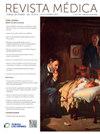IF 0.4
Q4 MEDICINE, GENERAL & INTERNAL
引用次数: 0
摘要
矿糖皮质激素依赖性高血压是一种常见的继发性高血压,包括多种疾病,它们有一个共同的特征:矿糖皮质激素受体的过度激活。最相关的原因包括原发性醛固酮增多症(PA), 11β-羟基类固醇脱氢酶2型(11β-HSD2)缺乏,以及典型先天性肾上腺增生的高血压形式。PA是一种肾上腺疾病,其特点是不适当的醛固酮产生是独立的生理调节。它是继发性高血压的常见原因,与原发性(原发性)高血压相比,它与更高的心血管风险相关。尽管有有效的诊断和治疗方法,但PA仍未得到充分诊断,使许多患者无法接受个性化、有效和潜在的治愈治疗。本综述的目的是为管理动脉性高血压患者的医疗保健专业人员提供有关矿皮质激素依赖性继发性高血压主要原因的最新和实用概述,特别关注PA。它涉及其病理生理学、诊断标准、遗传学进展和治疗策略,目的是在临床实践中改进其检测和及时管理,最终减少相关的发病率和死亡率负担。本文章由计算机程序翻译,如有差异,请以英文原文为准。
Hipertensión arterial mineralocorticoidea
Mineralocorticoid-dependent hypertension is a common form of secondary hypertension that encompasses various disorders sharing a common feature: hyperactivation of the mineralocorticoid receptor. The most relevant causes include primary aldosteronism (PA), 11β-hydroxysteroid dehydrogenase type 2 (11β-HSD2) deficiency, and the hypertensive forms of classic congenital adrenal hyperplasia. PA is an adrenal disorder characterized by inappropriate aldosterone production that is independent of its physiological regulators. It is a frequent cause of secondary hypertension and is associated with higher cardiovascular risks compared to primary (essential) hypertension. Despite the availability of effective diagnostic and therapeutic methods, PA remains underdiagnosed, preventing many patients from receiving personalized, effective, and potentially curative treatments. The aim of this review is to provide healthcare professionals managing patients with arterial hypertension with an updated and practical overview of the main causes of mineralocorticoid-dependent secondary hypertension, with a particular focus on PA. It addresses its pathophysiology, diagnostic criteria, genetic advances, and therapeutic strategies, with the goal of improving its detection and timely management in clinical practice, ultimately reducing the associated morbidity and mortality burden.
求助全文
通过发布文献求助,成功后即可免费获取论文全文。
去求助
来源期刊

Revista Medica Clinica Las Condes
MEDICINE, GENERAL & INTERNAL-
CiteScore
0.80
自引率
0.00%
发文量
65
审稿时长
81 days
 求助内容:
求助内容: 应助结果提醒方式:
应助结果提醒方式:


